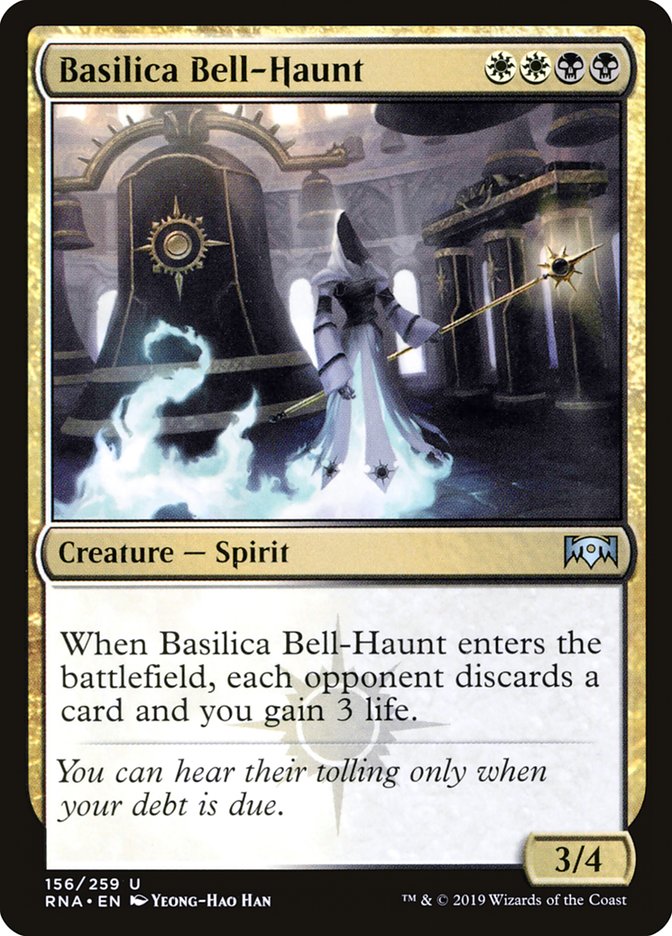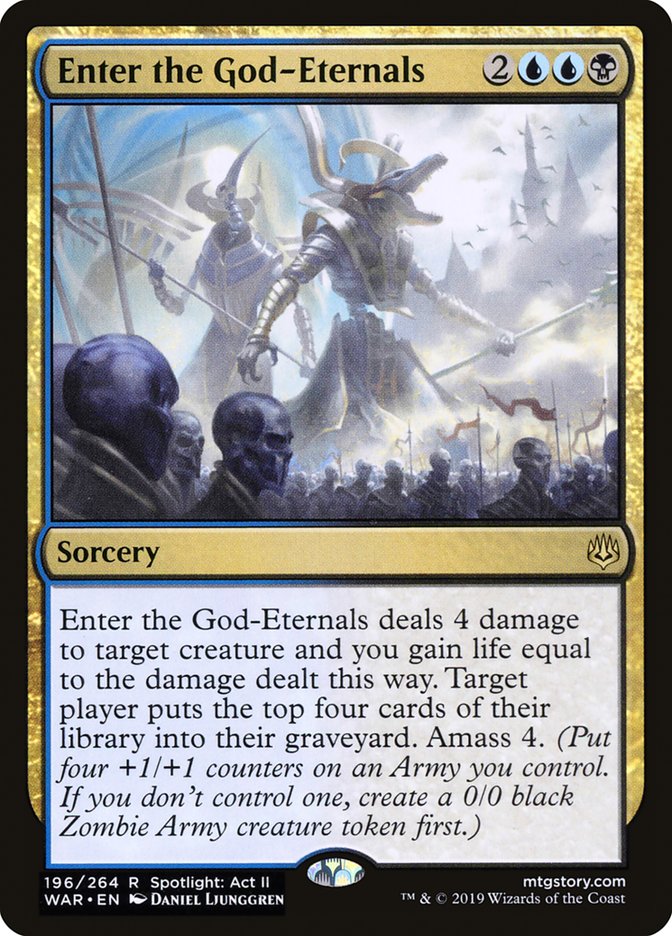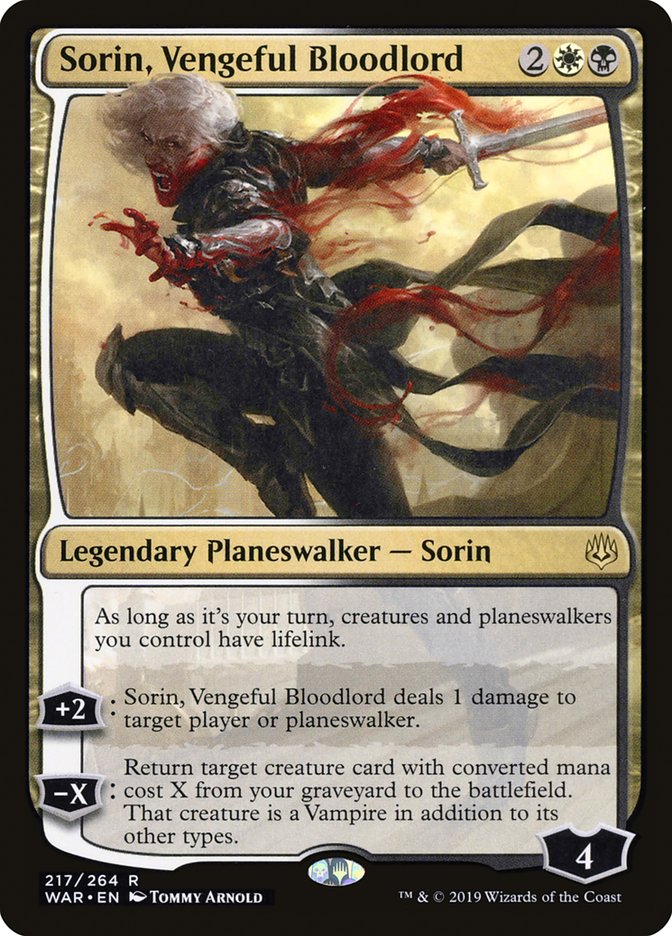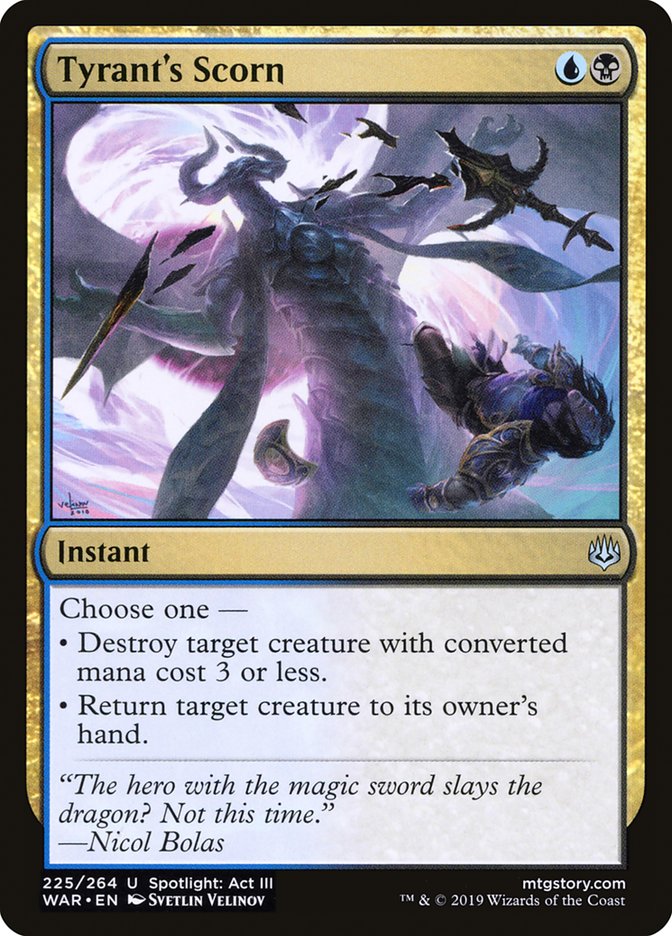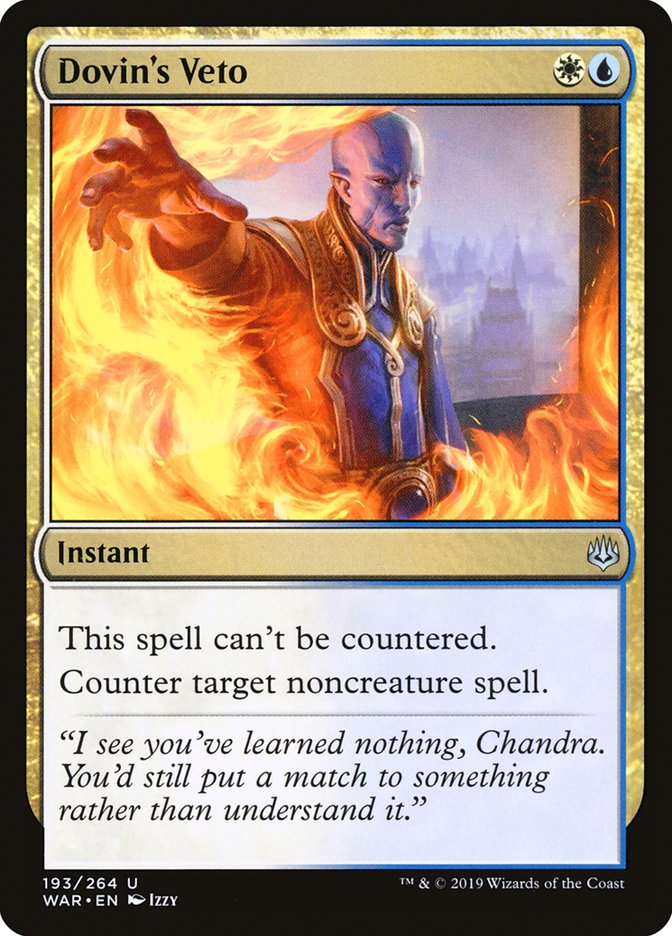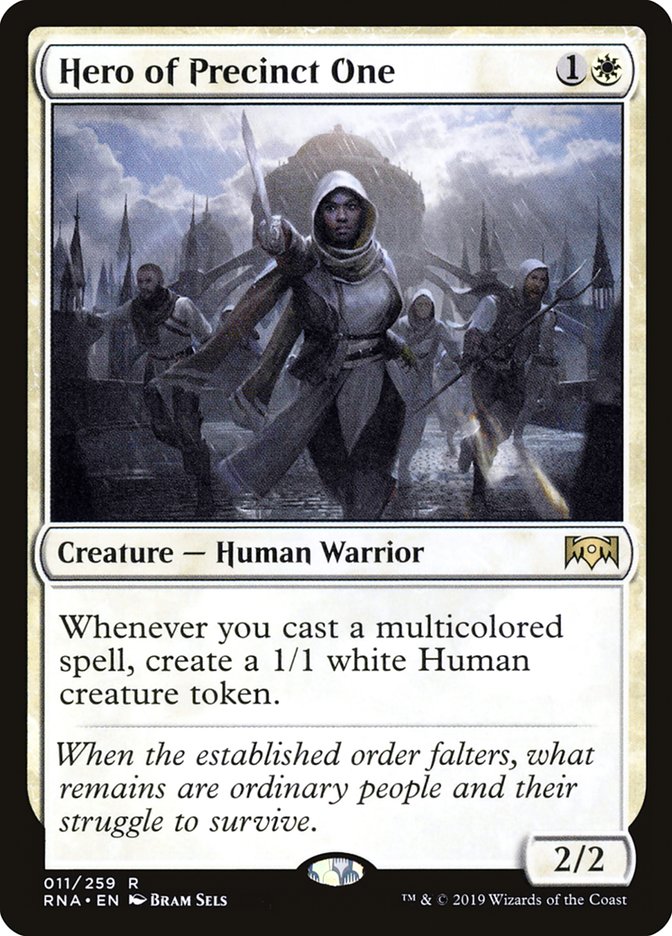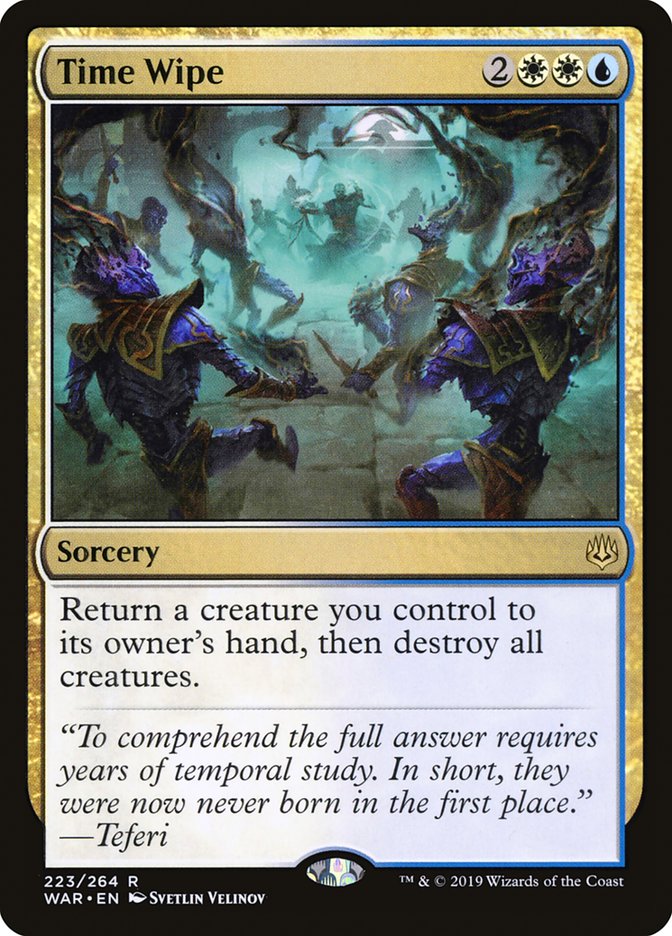Week 1 Standard is always an exciting time as a Magic player. Even in the spring and summer when the format’s top decks are known and well-tuned, making it more difficult for new strategies to break into the metagame, there’s a lot of uncertainty about exactly which new cards will make an impact and how large that impact will be. This goes doubly so for War of the Spark, because planeswalkers typically have a significant impact on Standard and the new design of many in the set make them more difficult to evaluate than the ones we’ve seen recently.
The biggest lesson I’ve learned over years of playing is that in Week 1, you’re not going to get everything right. You’re not going to break the format, and you’re going to have regrets about how you built your deck, if not your deck choice itself. It takes thousands of games from hundreds of players to arrive at a tuned decklist these days, so the goal is simply to not screw it up too badly. It’s like horseshoes: getting close enough counts for something.
The second-biggest lesson: this is a Magic tournament like any other, by which I mean I only care about building a deck that will be good for this specific weekend. If it stays good over the long term, then great, but if it falls off as the metagame takes a more defined shape, then that’s not a problem. It seems like every Week 1 tournament has a deck that falls off despite the hype of its early performance. Last season we had two, with Jonathan Hobbs’s Bant Flash and Wyatt Darby’s Esper Midrange decks both failing to live up to their early promise.
Creatures (22)
- 2 Hostage Taker
- 2 Lyra Dawnbringer
- 3 Thief of Sanity
- 4 Deputy of Detention
- 3 Seraph of the Scales
- 4 Basilica Bell-Haunt
- 4 Hero of Precinct One
Planeswalkers (2)
Lands (24)
Spells (12)

It’s the latter of these two that I want to focus on today, because with some help from War of the Spark I think the deck has the ability to emerge as a top contender in the coming Standard season. But first, let’s examine why the deck failed to do so last season.
In looking at Darby’s list, it’s clear that his list was specifically tuned to target aggressive decks. Basilica Bell-Haunt is a multicolored card for Hero of Precinct One, but it’s mostly a haymaker against aggressive decks, especially any featuring Goblin Chainwhirler. Combined with maindeck copies of Lyra Dawnbringer at the top of the curve, you have a deck that should mop up small creatures and utilize a sideboard full of counterspells and discard to salvage its control and Wilderness Reclamation matchups.
Unfortunately, as the format progressed, those aggressive decks became less popular, and Sultai Midrange and Esper Control took center stage. Esper Midrange had a hard time contending in the midrange mirror with Sultai and its Hydroid Krasises and Finds. But towards the end of last season, we saw a decline in Sultai’s numbers, and a more polarized metagame emerged with white and red aggressive decks on one side and Esper Control and various Wilderness Reclamation strategies on the other.
This kind of metagame is more exploitable, but Esper Midrange still runs into the classic midrange problem of needing to draw the right half of its deck for a given matchup. Too many dead removal spells and your value creatures won’t mean anything against Esper Control; too many discard spells and value creatures could make you too slow against Venerated Loxodon and company. Esper Midrange plays Discovery to help smooth its draws but that’s not particularly efficient and getting to the battlefield is paramount in Standard. Izzet Drakes can putz around with cantrips because a Drake or Niv-Mizzet, Parun backed by Dive Down can turn the game around in a hurry, and even that deck has fallen off considerably from where it was in the fall.
There are two additions from War of the Spark that go a long way towards solving these two issues: Teferi, Time Raveler and Enter the God-Eternals. Let’s tackle them in order.
Teferi, Time Raveler is the perfect midrange card because it will always do something valuable, but it can completely take over a game against any deck relying on counterspells or Wilderness Reclamation. Keeping Esper Control and Simic Nexus at sorcery speed shuts a huge part of their gameplan down, and the latter has little in the way of recourse, hoping to set up Wilderness Reclamation followed by Blink of an Eye, which is tough to do against Thought Erasure, Mortify, and other interaction.
Teferi, Time Raveler won’t be -3ing much in these matchups, though tagging a Search for Azcanta, Wilderness Reclamation, or Teferi, Hero of Dominaria before taking it for good with a discard spell is a great play. The -3 ability does come up a lot in the creature matchups, however. Buying time against aggressive decks while ensuring you make your land drops to hit your high-impact cards on time is more than suitable for a three-mana spell, and against a deck like Sultai, the versatility that ability has is invaluable.
Sometimes you’ll need to bounce a creature to ensure you can attack Vivien Reid for lethal damage. Sometimes you’re just trying to stabilize from falling behind, and gaining tempo with no loss of card advantage is a great way to do that. Other times you’ll be able to reset a Wildgrowth Walker that gets out of hand, or even better, reset your own Hostage Taker or Deputy of Detention for another removal spell. That last play, along with the fact that it will always at least cantrip, makes Teferi a great topdeck as the game goes long, an important trait for midrange mirrors.
It’s easy to read Teferi as a glorified Unsummon, but tacking card draw onto a tempo spell is incredibly powerful, since it lets you gain an advantage along one axis without sacrificing along the other. When you Unsummon a creature and fail to take advantage of the tempo swing, you’re down a card down the road, but that’s not true with Teferi, and in fact your opponent will often have to sacrifice a card to answer the planeswalker that’s left behind or watch you cash it in for a second card, leaving you ahead in material and tempo on the exchange.
And the fact that its static ability is so powerful against control and Wilderness Reclamation means skewing the maindeck towards beating creatures doesn’t come at as great a sacrifice. You may not be ahead in Game 1 in those matchups, but as long as you can keep it close, your excellent sideboard will take over – just take care to not get punked out by Biogenic Ooze or some similar creature nonsense against those dastardly Nexus players.
The second addition, Enter the God-Eternals, is a big upgrade to Basilica Bell-Haunt. It needs a creature to target, which can be awkward, but it’s so much more powerful when it lands against both aggressive decks and midrange creature matchups, since the card advantage it generates is on the battlefield, thus creating a tempo swing that Bell-Haunt does not. Moreover, with Teferi, Time Raveler’s +1, you can cast it at instant speed, which is…a big game, particularly against a Turn 5 Wildgrowth Walker plus Jadelight Ranger from Sultai Midrange.
Should you really need the lifegain, targeting your own creature will do – hopefully just a token from Hero of Precinct One – but sometimes you gotta do what you gotta do. The potential awkwardness is worth getting yet another powerful Nekretaal-style threat into the deck to complement Deputy of Detention and Hostage Taker. Esper may not have a single card as powerful as Hydroid Krasis, but it can make up for it on sheer volume of advantage-generating threats.
Here’s my current list, and front-runner for this weekend’s Standard Open in Richmond:
Creatures (14)
Planeswalkers (7)
Lands (24)
Spells (15)

There are a couple of other new additions, like Sorin, Vengeful Bloodlord to provide additional lifegain against aggressive decks and recur the powerful creatures. It’s especially good when recurring Hostage Taker with all your mana available to immediately put the hostage to good use, or to recur a Hostage Taker on Turn 4 to put the opponent to the test again, this time with a planeswalker left to answer as well. There are so many high-impact creatures in the middle of the curve here for Sorin to recur that the card plays perfectly in the deck.
Tyrant’s Scorn gives you a nice, cheap removal spell that plays well with Hero,and can conveniently protect a key creature from removal or rebuy Hostage Taker or Deputy of Detention late in the game like Teferi. With all the removal stapled onto creatures, this may be going overboard on targeting creatures in the maindeck, but Teferi acting as a security blanket for the noncreature matchups makes me want to skew the list even further in that direction.
And lastly, Dovin’s Veto is a great upgrade to Negate that plays well with Hero of Precinct One. It’s not much, but every little bit counts here, and bringing in both Negate and Duress cut into Hero’s effectiveness by quite a bit.
Beyond the value of specific additions from War of the Spark, Hero of Precinct One stands to gain value just from gaining another set of multi-colored cards with which to enable it. Darby’s list was scraping to hit the high bar for multicolored cards needed to enable Hero, and now there are enough that you can pick and choose which ones you want without fear of falling short in the end. If the metagame shows to be much less creature-heavy, this deck will be much better at adapting than it was three months ago because it makes better use of the larger card pool than other decks in Standard.
A less creature-oriented metagame would call for more planeswalkers like Dovin, Grand Arbiter over some of the removal and perhaps a maindeck copy of Dovin’s Veto. If you’re concerned a lot about Wilderness Reclamation, then consider the fourth copy of Mortify over a Tyrant’s Scorn. And if you’re looking for another haymaker to help in midrange mirrors, I’d look to Time Wipe.
This is one of the best cards to cast at instant speed with a Teferi, Time Raveler +1 and puts the opponent in a squeeze with Enter the God-Eternals. Holding back to play around the sweeper leaves them vulnerable to the tempo swing from Enter, and aggressively using removal to keep the battlefield clear will only leave them vulnerable to your more powerful threats as the game drags on.
I especially like how Time Wipe is a sweeper that plays well with Deputy of Detention and Hostage Taker, letting you keep your removal spell while giving back what they took just in time for it to get caught up in the sweeper. A deck with as many planeswalkers as this one would love a sweeper as a catch-up tool, but they typically play so poorly with Hero and the aforementioned creatures that something like Kaya’s Wrath is a non-starter. Time Wipe is perfect.
Darby’s success with Esper Midrange was the first inkling we had of the power of the Dimir core of Thought Erasure, Thief of Sanity, and Hostage Taker. Various decks utilizing these cards, from Esper to Grixis, to Sultai, to straight Dimir, were tried, but they all failed to have lasting success. Thought Erasure made its way into maindecks as a staple of the format while Thief of Sanity settled into its role as most feared sideboard card in the format, and Hostage Taker mostly saw play as part of the blue splash in Sultai Midrange.
The way I see it, Darby had it right the first time. He was just a little ahead of his time.


